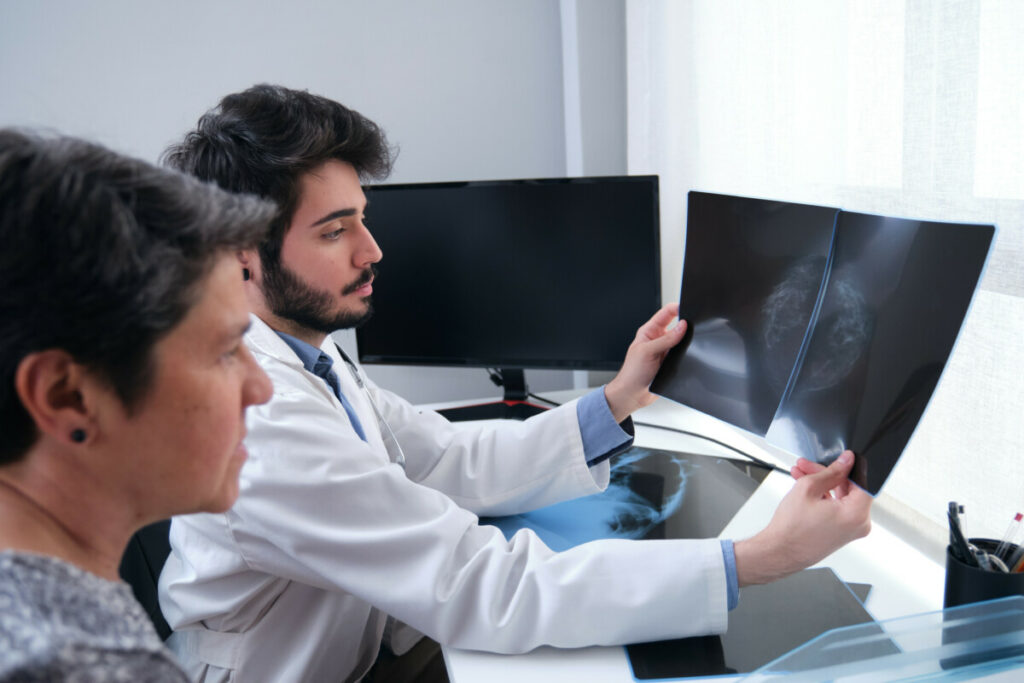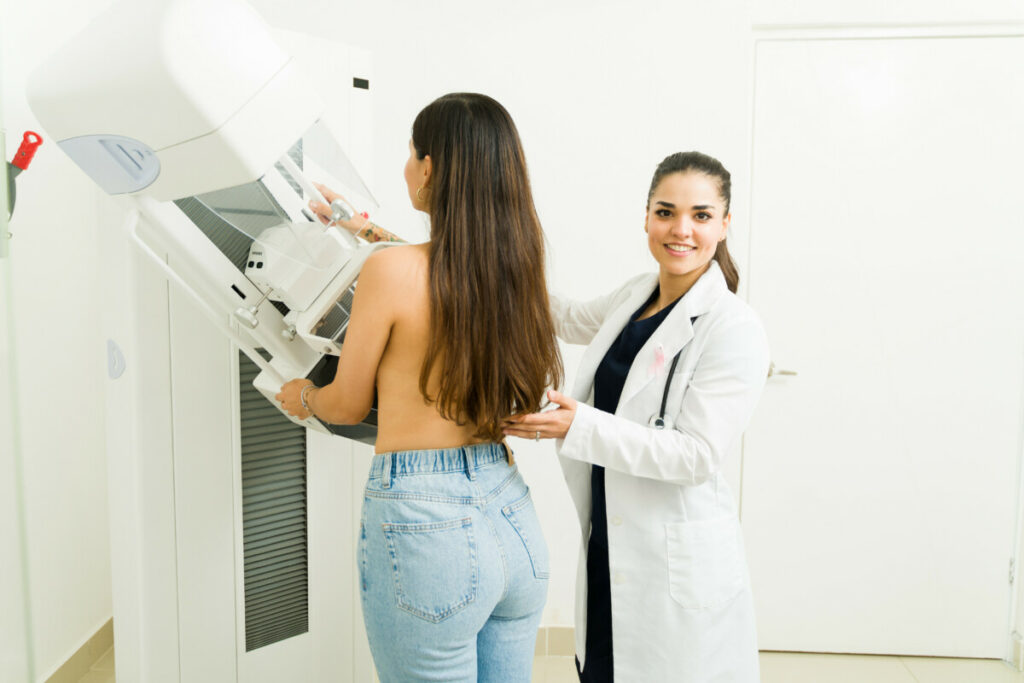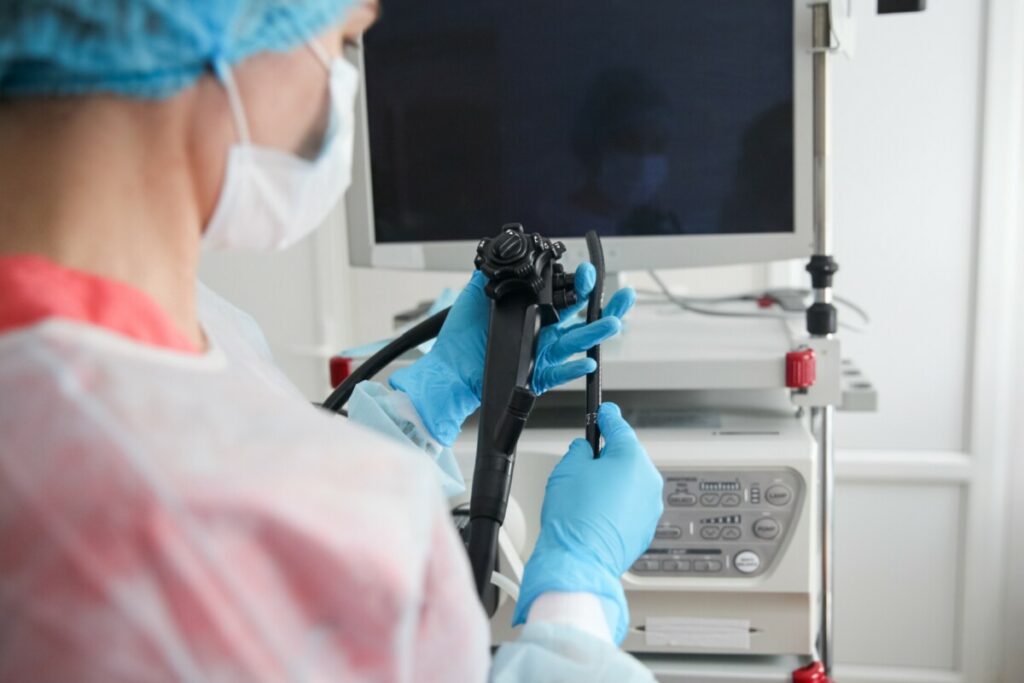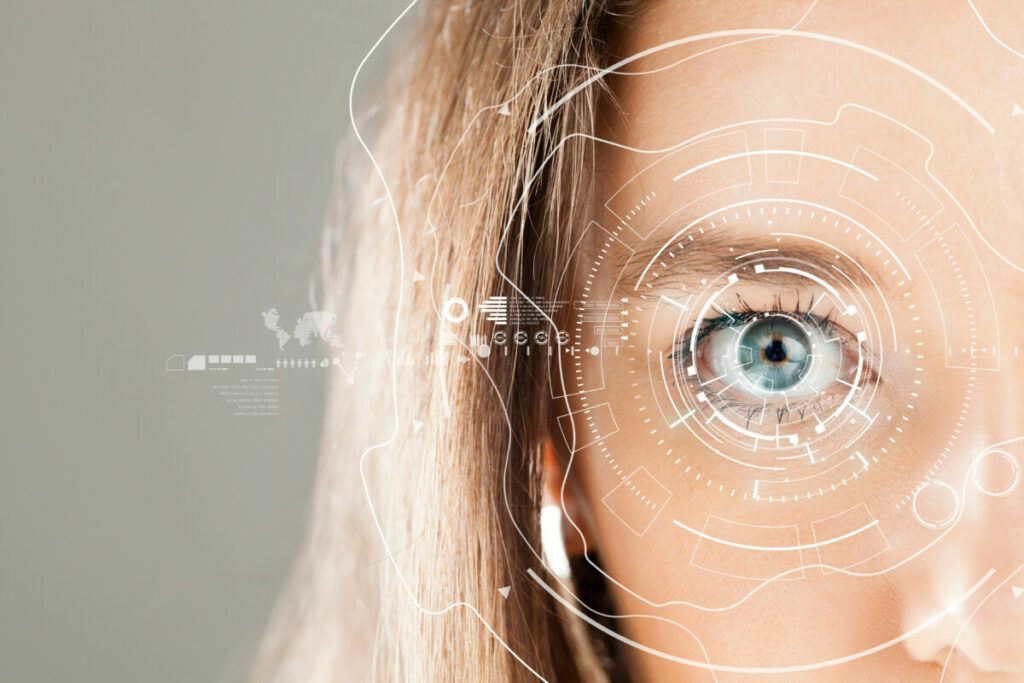This post may contain affiliate links, which means if you enroll through my link, I’ll receive a small commission at no extra cost to you.

Breast cancer is one of the most common cancers among women worldwide, and early detection is key to successful treatment. Regular mammograms are an essential tool in detecting breast cancer early, but the cost of the procedure can be a barrier for some women, especially those without insurance. In this article, we will explore how much a mammogram costs without insurance, as well as affordable options and community resources available to help women access this critical screening tool.
The cost of a mammogram can range from $80 to $300 without insurance. Many factors can affect the cost, including the type of mammogram performed, the facility the mammogram is performed at, and the availability of the necessary machines.
Whether you have insurance or not, it’s crucial to prioritize regular mammograms for breast cancer prevention and early detection. In this article, we will dive deeper into the factors that affect mammogram costs and provide tips for finding affordable options. By the end of this article, you will have a better understanding of mammography screening costs, resources available, and how to make informed decisions about your health.
Cost of Mammograms Without Insurance
Mammograms are an essential tool for detecting breast cancer early, but the cost of the procedure can be a barrier for many women who don’t have insurance. The cost of a mammogram without insurance can vary widely depending on several factors, such as the type of mammogram, the provider, and the location. On average, the cost can range from $80 to $300 or more.
The type of mammogram you need can affect the cost. A screening mammogram typically costs less than a diagnostic mammogram, which may require additional imaging and interpretation. The provider you choose and your geographic location can also affect the cost, with urban areas generally having higher prices than rural areas.
Fortunately, there are several affordable options available to women who need mammograms but cannot afford to pay the full price out of pocket. Some community health clinics offer low-cost or sliding-scale mammograms. Additionally, some states offer free or low-cost mammograms through their breast and cervical cancer early detection programs.

Factors Affecting Mammogram Cost
Several factors can affect the cost of a mammogram, with or without insurance. Here are some of the most common factors that can impact the cost of a mammogram:
- Type of Mammogram: The type of mammogram you need can affect the cost. A screening mammogram, which is a routine mammogram for women without any breast cancer symptoms, usually costs less than a diagnostic mammogram. A diagnostic mammogram may require additional imaging and interpretation, which can increase the cost.
- Provider: The provider you choose can also affect the cost of a mammogram. Mammograms performed at hospitals or imaging centers are often more expensive than those performed at a physician’s office or a community health clinic.
- Location: The cost of a mammogram can also vary depending on your geographic location. Generally, mammograms in urban areas tend to be more expensive than those in rural areas.
- Insurance Coverage: If you have insurance, your plan can impact the cost of a mammogram. The type of insurance you have, your deductible, and co-payments can all affect how much you pay out of pocket.
- Additional Services: If additional imaging or testing is needed, such as a breast ultrasound or MRI, the cost can increase significantly.
- Discounts and Payment Options: Some providers offer discounts or payment plans for mammograms, which can help make the cost more manageable.
In conclusion, the cost of a mammogram can vary widely depending on several factors. By understanding these factors, you can make informed decisions about where to go for your mammogram and how to manage the cost. Don’t let the cost be a barrier to accessing this important screening tool for breast cancer prevention and early detection.
Affordable Options for Mammography Screening
Mammography screening is critical for the early detection of breast cancer, but it can be expensive for women who don’t have insurance. Fortunately, there are several affordable options available for women who need mammograms but cannot afford to pay the full price out of pocket. Here are some of the most common affordable options for mammography screening:
- Community Health Clinics: Many community health clinics offer low-cost or sliding-scale mammograms for women without insurance or who cannot afford the full cost of the procedure.
- State-Funded Programs: Some states offer free or low-cost mammograms through their breast and cervical cancer early detection programs. These programs typically have income requirements and other eligibility criteria.
- Mobile Mammography Units: Some hospitals and imaging centers have mobile mammography units that travel to underserved communities and provide mammograms at a reduced cost or for free.
- Nonprofit Organizations: Some nonprofit organizations, such as the American Cancer Society, offer free mammograms or financial assistance for mammograms for eligible women.
- Screening Programs: Some hospitals and imaging centers offer annual mammogram screening programs at a reduced cost or for free during breast cancer awareness month in October.
- Health Savings Accounts (HSAs) and Flexible Spending Accounts (FSAs): If you have an HSA or FSA, you can use pre-tax dollars to pay for mammography screening, reducing the out-of-pocket cost.
In conclusion, there are several affordable options available for women who need mammography screening but cannot afford the full cost. By exploring these options, women can prioritize their breast health and detect any potential issues early, without worrying about the financial burden.

Community Resources for Free or Low-Cost Mammograms
Access to mammography screening is essential for the early detection of breast cancer, but the high cost of the procedure can be a barrier for many women. Fortunately, there are community resources available for free or low-cost mammograms. Here are some of the most common community resources that offer free or low-cost mammograms:
- National Breast and Cervical Cancer Early Detection Program: This program provides free or low-cost mammograms to women who are uninsured or have limited insurance coverage. The program is available in all 50 states and the District of Columbia.
- Susan G. Komen: Susan G. Komen is a nonprofit organization that provides free or low-cost mammograms to uninsured or underinsured women through their breast care helpline.
- YWCA: The YWCA provides free or low-cost mammograms to women who are uninsured or underinsured. The organization has several locations across the United States.
- American Cancer Society: The American Cancer Society provides free or low-cost mammograms to eligible women through their breast cancer screening program. The program is available in select areas of the United States.
- Planned Parenthood: Planned Parenthood provides affordable mammograms to women who are uninsured or underinsured. The cost of the mammogram is based on a sliding scale, depending on the patient’s income.
- Local Health Departments: Some local health departments offer free or low-cost mammograms to women who are uninsured or underinsured. These services may be limited, so it’s important to check with your local health department for availability.
In conclusion, there are several community resources available for free or low-cost mammograms for women who cannot afford the full cost of the procedure. By taking advantage of these resources, women can prioritize their breast health and detect any potential issues early, without worrying about the financial burden.
Comparison of Mammogram Costs Across Different Providers
Mammograms are an important screening tool for the early detection of breast cancer, but the cost of the procedure can vary significantly across different providers. Here’s a comparison of mammogram costs across different providers:
- Imaging Centers: The cost of a mammogram at an imaging center can vary between $80 to $450, depending on the location and type of mammogram.
- Hospitals: The cost of a mammogram at a hospital can range from $150 to $1,000 or more, depending on the location and type of mammogram.
- Private Practices: The cost of a mammogram at a private practice can range from $80 to $300, depending on the location and type of mammogram.
- Mobile Mammography Units: The cost of a mammogram at a mobile mammography unit can range from free to $200, depending on the location and type of mammogram.
It’s important to note that the cost of a mammogram may also depend on other factors, such as the patient’s insurance coverage, the type of mammogram being performed, and whether additional imaging or testing is required.
When choosing a provider for a mammogram, it’s important to consider the overall cost as well as the quality of care and convenience. Some providers may offer discounts or payment plans for patients without insurance, so it’s always a good idea to ask about these options.

Future of Mammography Screening and Healthcare Costs
Mammography screening has become an essential tool in the early detection of breast cancer, but concerns around healthcare costs continue to affect women’s access to these critical services. Fortunately, advancements in mammography technology and healthcare policies are poised to make breast cancer screening more affordable and accessible in the future.
One of the most promising advancements in mammography technology is 3D mammography, also known as tomosynthesis. 3D mammography provides a more detailed and accurate image of the breast, which can lead to earlier detection of breast cancer and fewer false positives. While 3D mammography is currently more expensive than traditional 2D mammography, it has the potential to reduce healthcare costs by detecting breast cancer at an earlier stage.
In addition to technological advancements, healthcare policies are also shifting to make mammography screening more accessible and affordable. The Affordable Care Act (ACA) requires insurance plans to cover mammography screening for women over the age of 40 without any cost-sharing, meaning that women can receive this critical screening without worrying about out-of-pocket costs. Medicaid also covers mammography screening for eligible women, and many community resources are available for free or low-cost mammograms.
As healthcare costs continue to be a concern for many women, it’s important to advocate for policies and resources that make mammography screening more affordable and accessible. By taking advantage of advancements in mammography technology and advocating for policies that prioritize women’s health, we can ensure that all women have access to the lifesaving benefits of breast cancer screening.
Different Types of Mammograms and their Costs
Mammograms are a type of imaging test that are used to detect breast cancer in women. There are several different types of mammograms available, each of which offers different benefits and comes at a different cost. Here’s a breakdown of the different types of mammograms and their costs:
- Screening Mammogram: A screening mammogram is the most common type of mammogram and is used to detect breast cancer in women who have no signs or symptoms of the disease. The cost of a screening mammogram typically ranges from $80 to $450.
- Diagnostic Mammogram: A diagnostic mammogram is used to evaluate breast abnormalities, such as a lump or changes in breast tissue. The cost of a diagnostic mammogram typically ranges from $150 to $1,000 or more.
- 3D Mammogram: 3D mammography, also known as tomosynthesis, is a newer type of mammogram that provides a three-dimensional image of the breast. The cost of a 3D mammogram is typically higher than a traditional mammogram and can range from $200 to $500.
- Breast MRI: Breast MRI is a type of imaging test that uses magnets and radio waves to create detailed images of the breast. The cost of a breast MRI can range from $500 to $3,500 or more.
- Breast Ultrasound: Breast ultrasound is a type of imaging test that uses sound waves to create images of the breast. The cost of a breast ultrasound typically ranges from $100 to $1,000 or more.
It’s important to note that the cost of a mammogram may vary depending on the location, the provider, and whether or not insurance is accepted. Additionally, some providers may offer discounts or payment plans for patients without insurance, so it’s always a good idea to ask about these options.
Overall, there are several different types of mammograms available, each of which comes at a different cost. By understanding the different options available and comparing costs across providers, women can make informed decisions about their breast health and prioritize the screening option that is most affordable and effective for them.

Payment Options for Mammography Screening
Mammography screening is an essential tool in the early detection of breast cancer, but concerns around healthcare costs can make it difficult for some women to access these critical services. Fortunately, there are several payment options available to make mammography screening more affordable and accessible. Here are some of the most common payment options for mammography screening:
- Insurance: Most health insurance plans cover the cost of mammography screening for women over the age of 40. The Affordable Care Act requires insurance plans to cover mammography screening without any cost-sharing, meaning that women can receive this critical screening without worrying about out-of-pocket costs.
- Medicaid: Medicaid is a government-funded healthcare program for low-income individuals and families. Medicaid covers mammography screening for eligible women, so if you are enrolled in Medicaid, you can receive this critical screening at little or no cost.
- Medicare: Medicare is a government-funded healthcare program for people over the age of 65 and for individuals with certain disabilities. Medicare covers the cost of mammography screening for eligible individuals.
- Community Resources: Many community resources are available for free or low-cost mammography screening. Non-profit organizations and government programs often offer mammography screening services to women who cannot afford it.
- Payment Plans: Some mammography providers offer payment plans to help make the cost of screening more affordable. With a payment plan, you can spread the cost of mammography screening over several months or years.
- Discounts: Some mammography providers may offer discounts to patients who do not have insurance or who are paying out-of-pocket. Be sure to ask about any available discounts when scheduling your appointment.
By understanding the different payment options available for mammography screening, women can make informed decisions about their breast health and prioritize the screening option that is most affordable and effective for them. It’s important to remember that early detection of breast cancer can save lives, so if you are due for a mammogram, don’t let concerns about cost prevent you from getting this critical screening.
How to Budget for a Mammogram Without Insurance
Mammograms are an important tool in the early detection of breast cancer, but the cost of the screening can be a significant barrier for women without insurance. However, with some planning and budgeting, it’s possible to make mammography screening more affordable. Here are some tips on how to budget for a mammogram without insurance:
- Research Costs: The cost of a mammogram can vary depending on the provider and the location. Before scheduling your appointment, research the cost of mammography screening at different providers in your area to find the most affordable option.
- Look for Discounts: Many mammography providers offer discounts to patients who pay out-of-pocket or who do not have insurance. Be sure to ask about any available discounts when scheduling your appointment.
- Payment Plans: Some mammography providers may offer payment plans to help make the cost of screening more manageable. With a payment plan, you can spread the cost of mammography screening over several months or years.
- Save in Advance: If possible, start saving for your mammogram well in advance. This will help you budget for the cost of screening without having to dip into other funds or take on debt.
- Utilize Community Resources: There are many non-profit organizations and government programs that offer free or low-cost mammography screening to women who cannot afford it. Research these resources in your area to find out if you qualify.
- Negotiate Costs: If you receive a bill for your mammogram that is higher than you can afford, don’t be afraid to negotiate with the provider. Many providers are willing to work with patients to come up with a payment plan or to reduce the cost of the bill.
By taking these steps to budget for a mammogram without insurance, you can prioritize your breast health and receive the critical screening you need to detect breast cancer early. Remember, early detection is key to successful treatment, so don’t let concerns about cost prevent you from getting the care you need.
Health shares are not insurance and do not offer insurance coverage. Membership in a health share does not guarantee the payment or reimbursement of medical expenses. Each organization operates under its own membership guidelines, which determine what expenses may be eligible for sharing. This publication is for informational purposes only and is not provided by an insurance company. For state-specific notices and full program details, please visit the respective health share’s official website.





Leave a Reply